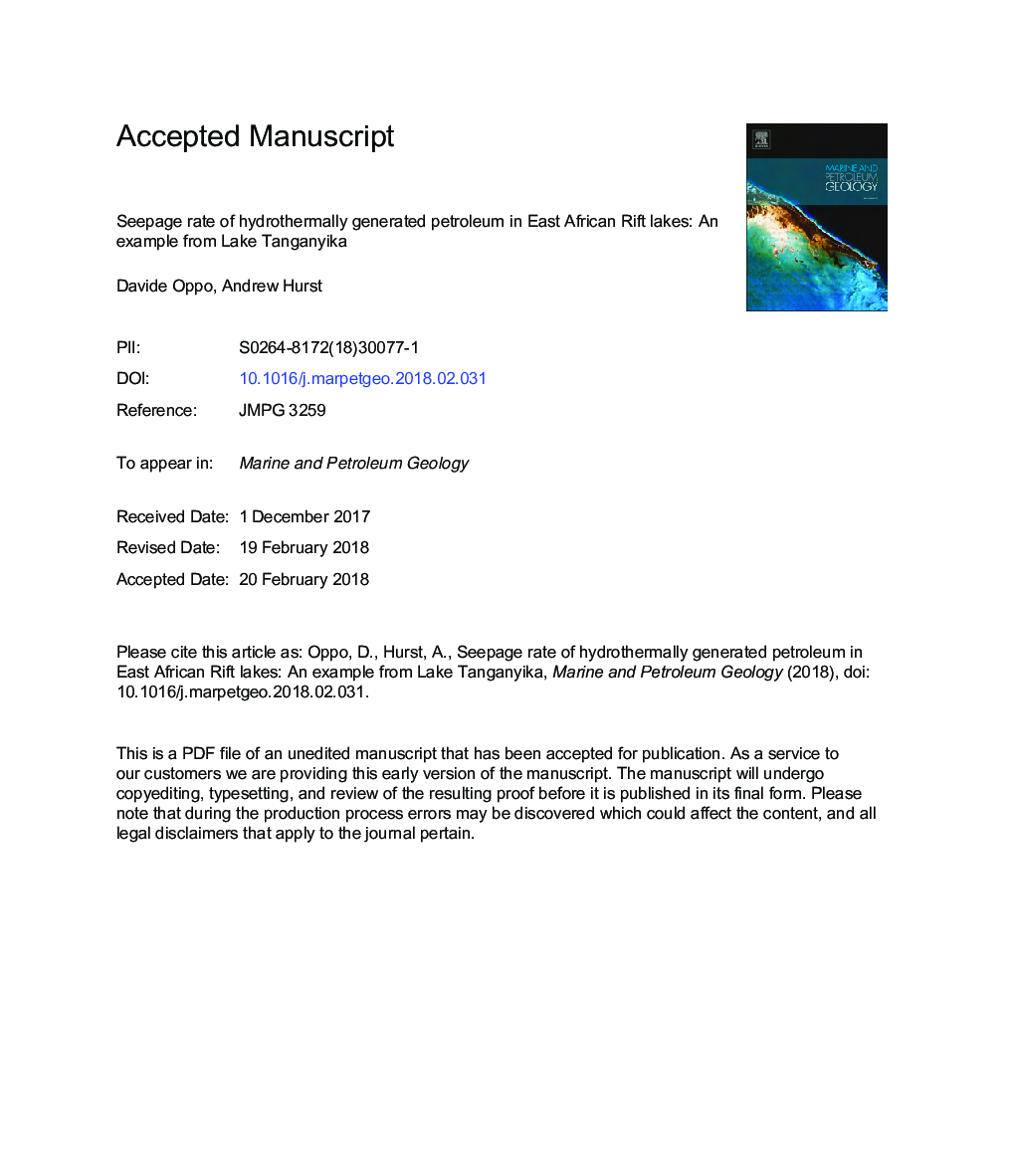| کد مقاله | کد نشریه | سال انتشار | مقاله انگلیسی | نسخه تمام متن |
|---|---|---|---|---|
| 8909107 | 1637133 | 2018 | 23 صفحه PDF | دانلود رایگان |
عنوان انگلیسی مقاله ISI
Seepage rate of hydrothermally generated petroleum in East African Rift lakes: An example from Lake Tanganyika
ترجمه فارسی عنوان
نرخ بذر نفت تولید شده توسط هیدروترمال در دریاچه های آفریقای شرقی: نمونه ای از دریاچه تنگانیکا
دانلود مقاله + سفارش ترجمه
دانلود مقاله ISI انگلیسی
رایگان برای ایرانیان
کلمات کلیدی
نفت خام هیدروترمال، دریاچه ریفت، دریاچه تنگانیکا، اسانس روغن، شکاف شرق آفریقا، رادار دیافراگم مصنوعی،
موضوعات مرتبط
مهندسی و علوم پایه
علوم زمین و سیارات
زمین شناسی اقتصادی
چکیده انگلیسی
Synthetic Aperture Radar images provide temporal coverage of the oil seepage recurrence at Cape Kalumba, Lake Tanganyika. In combination with legacy seismic data, it has been possible to reconstruct the geological context that regulates seepage and estimate the oil seepage rates. Oil seepage is along fractures associated with the East Ubwari Faults, which in turn promote an active hydrothermal system that matures very shallow (10's m below the lake floor) oil-prone, less than 25 kyr old source rocks. Temporally consistent oil slick origin points are preferentially aligned E-W and SE-NW, and feed oil slicks on the lake surface. Pervasive seeps activity with significant emission rates, up to 449.39â¯m3â¯y-1, proves the presence of high-quality oil-prone source rocks and an active petroleum system that emits oil to form slicks. Hydrothermally-driven source rock maturation occurring at very shallow depth creates a narrow depth-window for conventional trapping of oil. Elsewhere in the lakes of the East African Rift, where similar hydrothermal systems occur, oil slicks may only be indicative of active petroleum systems without the presence of conventional traps.
ناشر
Database: Elsevier - ScienceDirect (ساینس دایرکت)
Journal: Marine and Petroleum Geology - Volume 92, April 2018, Pages 149-159
Journal: Marine and Petroleum Geology - Volume 92, April 2018, Pages 149-159
نویسندگان
Davide Oppo, Andrew Hurst,
